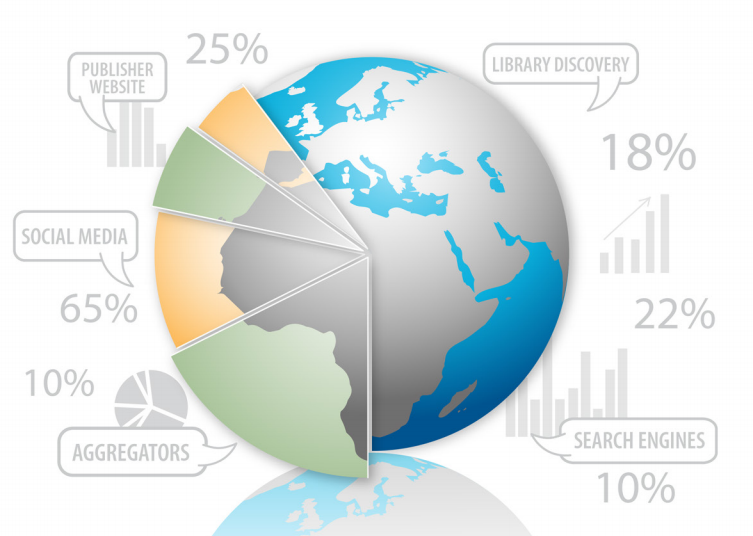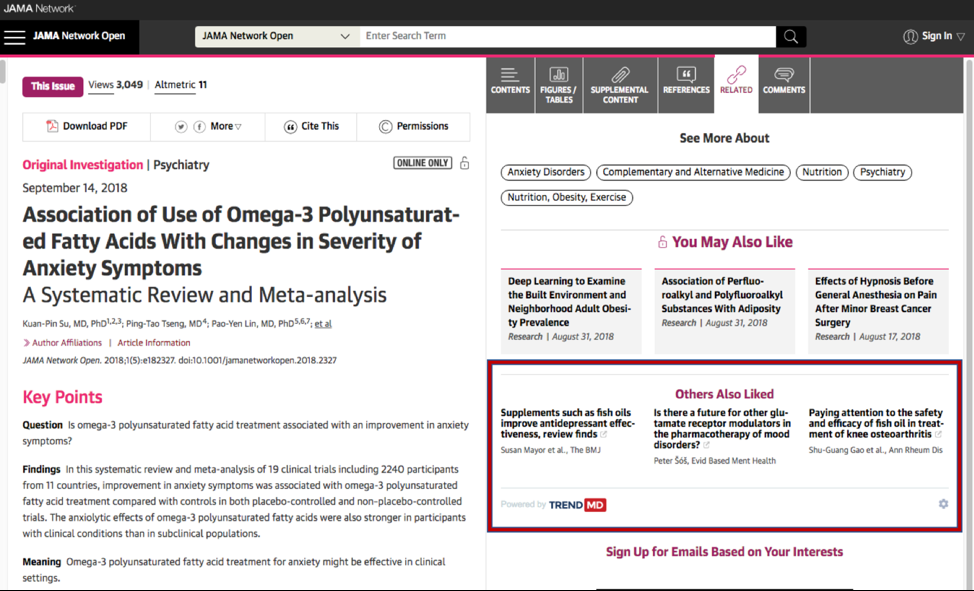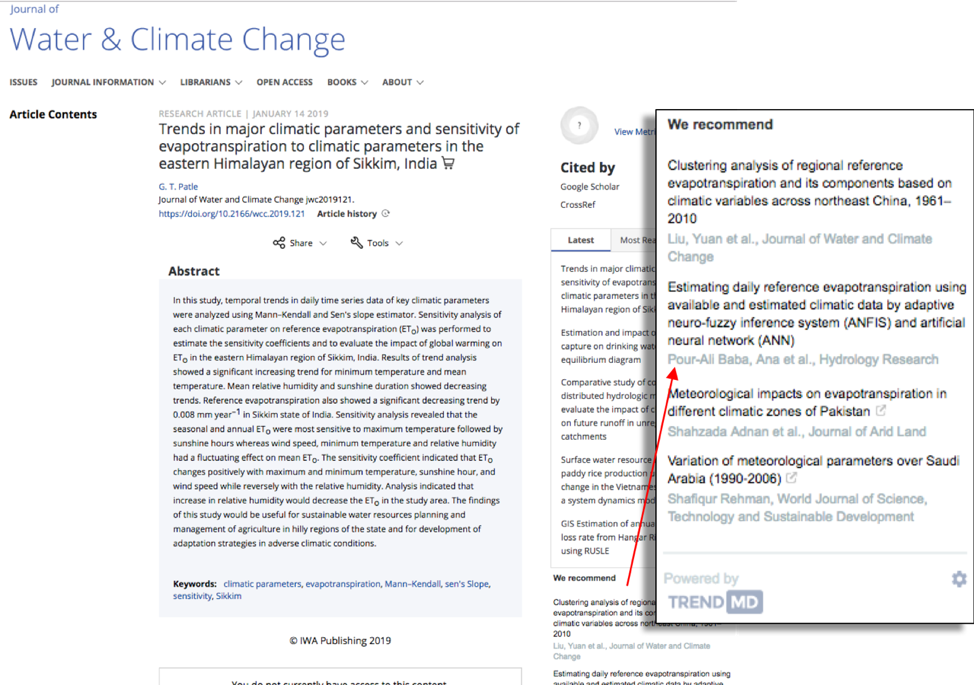How do researchers stay on top of new developments in a fast-moving field? How do publishers ensure that readers are aware of all the content they have to offer that meets their subscribers’ interests?

From the "How Readers Discover Content in Scholarly Publications Report," 2018
The recently published report How Readers Discover Content in Scholarly Publications, by Simon Inger and Tracy Gardner for Renew Publishing Consultants, described that while A&I databases and search engines are the first place that users look for articles on a specific subject, browsing is an important part of the researcher workflow. Most importantly, the new findings validate a key point from their previous study, published in 2015:
“Related Articles functionality is the most useful feature of those tested, and has maintained its position fairly consistently over the period of study.”Users continue to value the Related Articles functionality on publisher websites, while the popularity of other website features, like site search, saved search, and alerting continue to decline.
In the 2017 AAP/PSP webinar, “The Changing Discovery Landscape,” Professor David McCandlish, a quantitative evolutionary biologist at Simons Center for Quantitative Biology, Cold Spring Harbor Laboratory, explained why he, like many researchers, finds the Related Articles feature useful:
“Not only am I trying to keep up with developments in my specialty, but I’m also trying to find cool ideas from other areas where I’m not an expert.”He especially appreciates discovering articles from journals outside of his own field of evolutionary biology and genetics, in adjacent fields such as math, physics, and engineering.
Scholarly publishers are well aware that making content as discoverable as possible is the key to increasing usage and retaining subscribers. TrendMD provides publishers with a powerful tool that can be used strategically to help increase the discoverability of their content. In 2016, a Learned Publishing study showed how TrendMD increased pageviews for one journal’s articles by 49%. Perhaps even more impactful to a journal’s long-term health is getting more citations and improving its Impact Factor. A more recent study, published in the journal Scientometrics, found that articles promoted through TrendMD showed a 77% higher likelihood to be saved by readers in their Mendeley accounts. This is important because, unlike other measures of article usage, like total pageviews or Altmetric scores, Mendeley saves have been shown in a number of other studies to be a more accurate predictor of future citation.
Using sophisticated algorithms across millions of articles served each month, recommended articles are identified based on keywords and user behavior, such as click behavior (“people that read X, also clicked on Y”), article popularity, and personalization (what the specific visitor has read on past visits to the network). The TrendMD widget is now installed on over 4,700 scholarly sites, including JAMA, BMJ Publishing Group, Taylor & Francis, Elsevier, PNAS, and AAAS. Over 125M unique monthly visitors see TrendMD recommendations across every discipline of scholarly research.
Here are a couple of examples of the TrendMD widget on Silverchair-hosted sites:
JAMA Example
IWA Publishing Example
About TrendMD
TrendMD’s cross-publisher recommendation widget keeps readers engaged by surfacing related content – both from the publisher’s own content and from other scholarly sites. By including both internal and external content, publishers join an online marketplace of scholarly traffic. Publishers can participate for free, earning credits when readers click on links to third-party sponsored content. Earned and purchased traffic credits are used to promote articles to new readers from the TrendMD network. TrendMD’s partnership with Silverchair makes it simple and free for scholarly publishers to install the widget on their websites. For further information, please see our website at https://trendmd.com/ or contact Bert Carelli, Director of Partnerships, bert.carelli@trendmd.com.